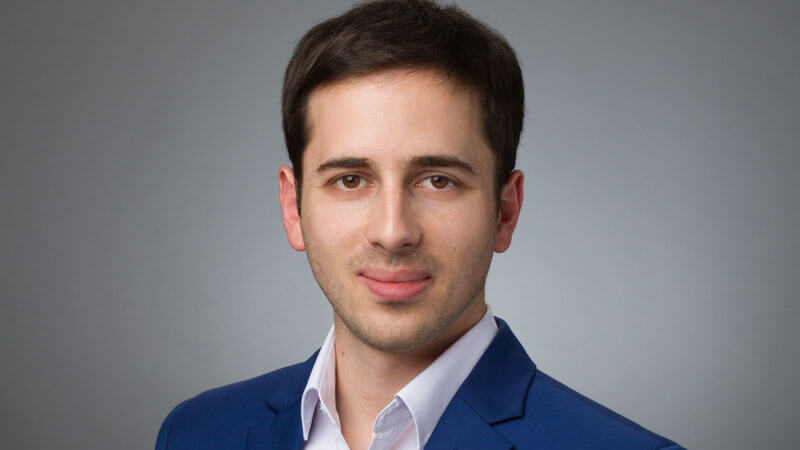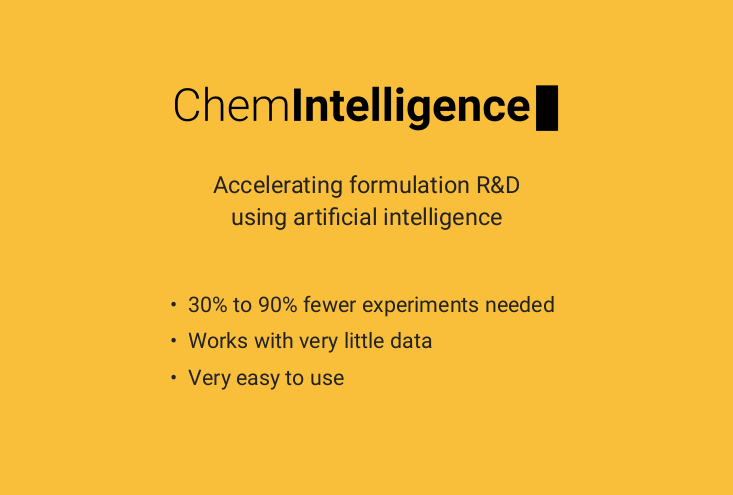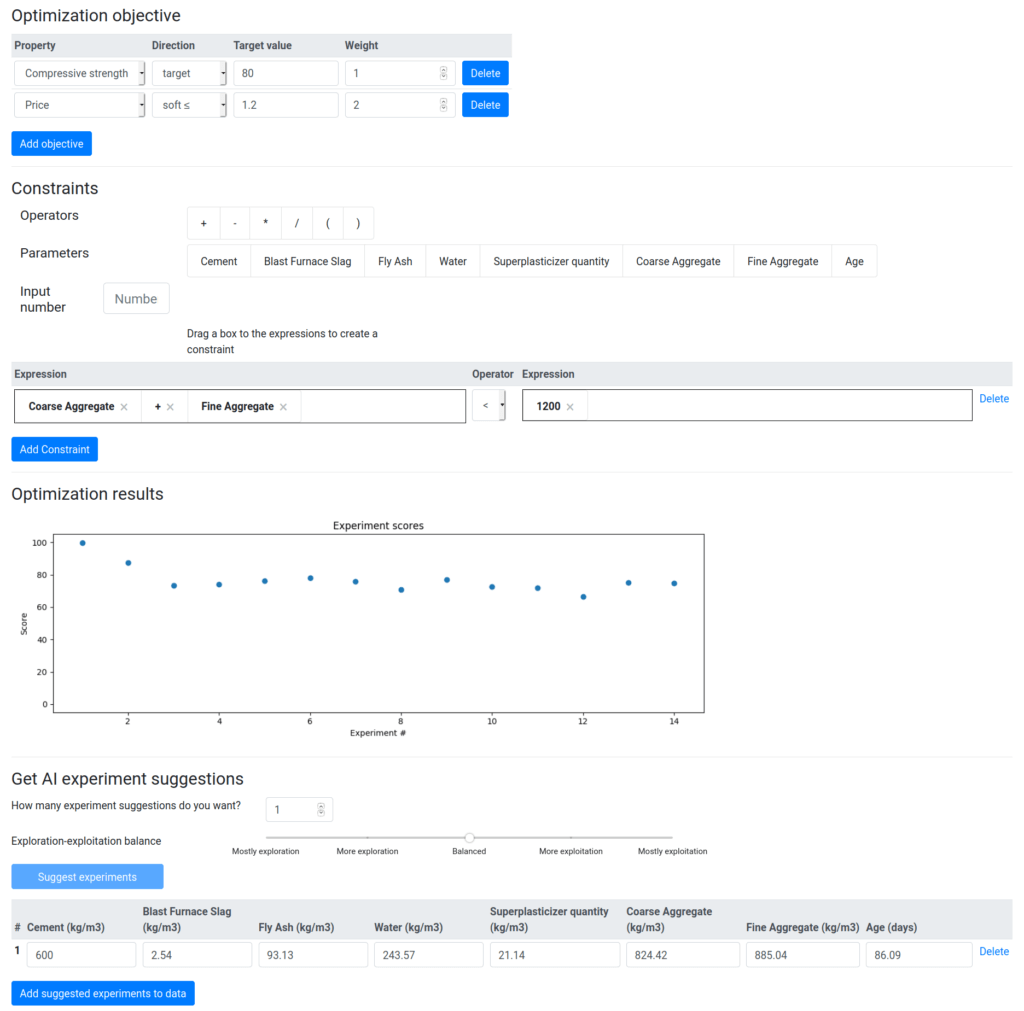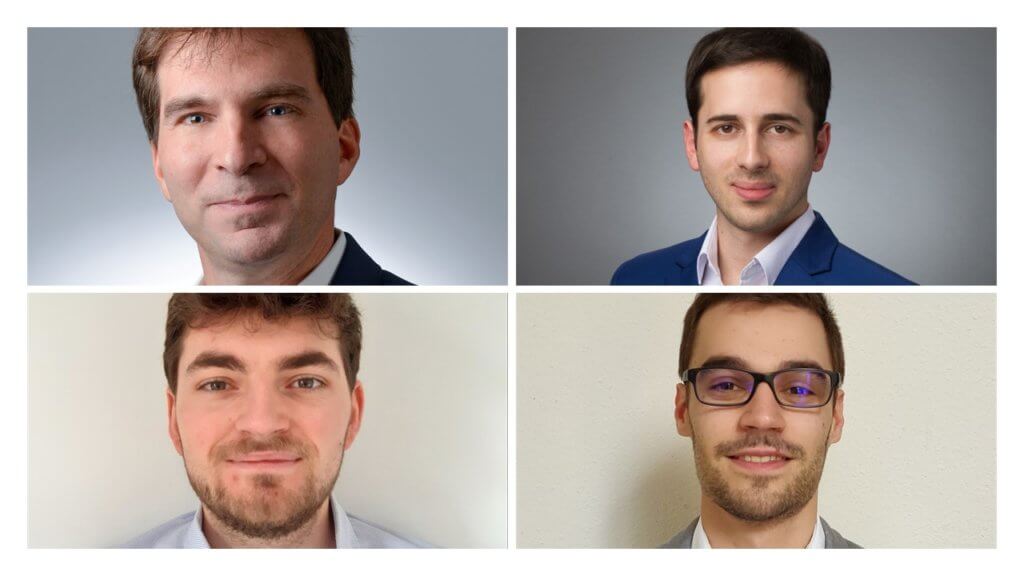Exploiting A Company’s Treasure: Accelerating Research & Development
Ronja Schrimpf
Every company is sitting on its own treasure – and so are you! If you want to learn more about your company’s own treasure and how to use it, the startup ChemIntelligence offers the perfect solution: ChemIntelligence created a platform which accelerates Research and Development by analysing the company’s own R&D data – a company’s treasure. The platform helps companies exploiting their ‘treasure’ in the most effective and efficient ways. In an interview with 5-HT, founder Thomas Galeandro-Diamant takes us on a treasure hunt.
 Thomas Galeandro-Diamant
Thomas Galeandro-DiamantLet’s start the treasure hunt: Who can participate? (Or: Who are your customers?)
“ChemIntelligence is mainly targeting the formulation industries. This means, we have use cases in many different industries, for example formulations of coatings, cosmetics, plastics, composites or cleaning products. Our use cases are very diverse.
But different industry sectors that are doing formulations are actually facing the same problems: They are working with very complex mixtures. It is very complicated to predict the property of the formulations and to design new ones. This is why we do not specialize on one particular industry, but we specialize on acceleration of formulation R&D.
One other problem in R&D work is that you need at least ten years to be a good formulator. Researchers in larger companies change their jobs quite often. As added benefit, ChemIntelligence helps young unexperienced researchers to be faster by offering a platform that helps compensate the missing experience.”
What is the treasure we are hunting? (Or: What is ChemIntelligence?)
“You are all sitting on a treasure: Data generated by your research laboratories. We (ChemIntelligence) help you exploit this treasure by generating new insights from it, leading it to an acceleration of your research and development and to unsuspected opportunities to develop new products.
We have developed a software platform where researchers and engineers can input their research and development data. The platform is able to suggest the most relevant experiments that should be performed, in order to get a new product that possesses properties that the researcher or engineer desires.
By doing that, ChemIntelligence is significantly accelerating chemistry and material research and development.”

What could I hope for from this treasure? (Or: What is the benefit of the platform?)
“Our platform enables a reduction of 25 to 80% of the number of experiments that are needed for developing new products or improving existing products.
The exact benefit depends on the topic of your research, the quantity and quality of the data the researchers put into the platform and the difficulty of the project itself. In general, the more difficult the project is, the more the number of experiments can be reduced. A difficult project means that it is difficult for humans to understand what happens in the experiments – and that is where Artificial Intelligence is able to see the patterns in the data, to extract the necessary information and to propose relevant experiments.
We started a few pilot projects with companies from different industrial sectors. In some of these cases we reached predictions of the number of experiments more than 50% reduced. In some difficult cases, we reached 80% reduction.”
How do you hunt a treasure? (Or: How does the platform work?)
“While using our platform, you can work on different projects at the same time. When starting a new project, there are several steps:
First, you will tell the software platform what you are working on, for example if you are working on new plastic materials. Then you will define the parameters of your experiment, so what you put inside your plastic’s formulation (the different ingredients and their quantities) and process parameters. You will also tell the results after the experiments are done, for example the mechanical properties you measured in the material.
The second step is to input your existing experiments of this project or of past projects.
In the third step, you have several options to extract value from your data.”
How do you exploit the treasure? (Or: What can be done with the data?)
“You can visualize your data, which usually is the first step in the process, because it helps you see trends and special points. It helps you understand your data.
After that, you can build predictive models with your data. We have developed and integrated on our platform an algorithm that is able to automatically find the best predictive model for your data. Once you have trained your predicted model, you can use it to test your ideas for experiments. For example, you imagine a new plastic with a new combination of polymer and additives and want to predict what will happen. You can input your idea into the platform and use the predictive model to predict the results of your virtual experiment. This helps you select your most promising ideas before going to the laboratory.
The last, most important and most interesting feature of our platform is the ability to tell the platform the results you want – for example, you want a polymer with exactly this mechanical resistance and that electric resistivity and with a maximum of these costs – and then to ask the platform to suggest the most relevant experiments in order to achieve these results. The platform will make its predictions and will suggest one or several experiments that you will then perform in the laboratory. With the new results you got from these experiments, you can feed the platform again – and it will learn from it. You iterate until you reach your new product with the “perfect” characteristics and you will hopefully and in most of the cases have done significantly less experiments with this process.

I say ‘hopefully’ and ‘in most cases’, because there is no absolute guarantee with Artificial Intelligence. But we have not had a case where a project needed more experiments than otherwise yet. And of course, the researchers can still decide themselves if they want to do the experiment the platform is suggesting. Of course, researchers can use a blend of their own ideas and the AI’s suggestions!”
Are there more treasure hunters out there? (Or: Do you have a lot of competition?)
“We do have some competitors, but each of these competitors has a slightly different position on the market. For example, some of them are targeting the pharma industry and others are specialized in materials. We, on the other side, don’t target certain industry sectors, but are specialized on formulation.
Also, one problem of many Artificial Intelligence algorithms (especially in the deep learning area) is that they usually need much data to be trained. Our software platform is able to work with very little data. In fact, if you have five to ten existing experiments, you can already start working with our platform.”
How did your start treasure hunting? (Or: How did you found ChemIntelligence?)
“Two years ago, I was working at a large Belgian multinational chemical company. I worked in the chemistry research and development laboratory, so I have done several years of trial and error experiments myself and spent a lot of time doing experiments that most of the time failed. At the same time, I did programming on myself for almost 15 years. That is when I saw the opportunity to use Artificial Intelligence to accelerate research and development.
Two years ago, I decided to start ChemIntelligence – a company, that has the agility of a startup and the expertise of this specific topic.
At the moment, we are four people working full-time. Two of us are programmers and are constantly making our software better, one is working on the commercial side, doing sales and contacting companies and since I am the CEO, I am doing a bit of everything.”
 Team ChemIntelligence
Team ChemIntelligenceHow did you feel as a treasure hunter at X-Linker? (Or: How was it to participate as a startup at 5-HT’s X-Linker?)
“I went to X-Linker and was not disappointed at all. I would definitely recommend it for other startups. The duration of the event was perfect. The four days were sufficient to learn a lot, meet many people and work on your project and at the same, they were not taking too much time away from the office – especially from the point of view of a startup.
Through X-Linker, I have made two demos to large corporates, plus a third one a month after X-Linker. We will see if these demos will translate to reals sales, because in B2B-Sales everything takes really long. But going through X-Linker, it was definitely easier to do meetings and demos than it would have been if we had contacted the companies ourselves.”
What is the plan for future treasure hunting? (Or: What are your goals for the next years?)
“The major task for us now is to sell – we have to sell and make money. We are self-funded, which means that we don’t have any external investors for the moment. This is why it is very important for us to sell the platform.
We also want to get more success stories that we can present to other companies. All of our customers do not necessary want to share their research and success stories. Of course, we respect that, but that makes is harder for us to present success stories.
We also have a lot of ideas for the platform. We are continuously adding new functionalities and improving the platform itself. We will also adapt our platform to specifics needs of our customers.”
5-HT Chemistry & Health Newsletter
Want the latest tech and industry news, events, relevant info from the ecosystem and more?
Subscribe to 5-HT Newsletter now Subscribe to 5-HT Newsletter now
Become part of the 5-HT Chemistry & Health
Exchange ideas with innovative startups and future-oriented companies in our ecosystem. We look forward to meeting you!